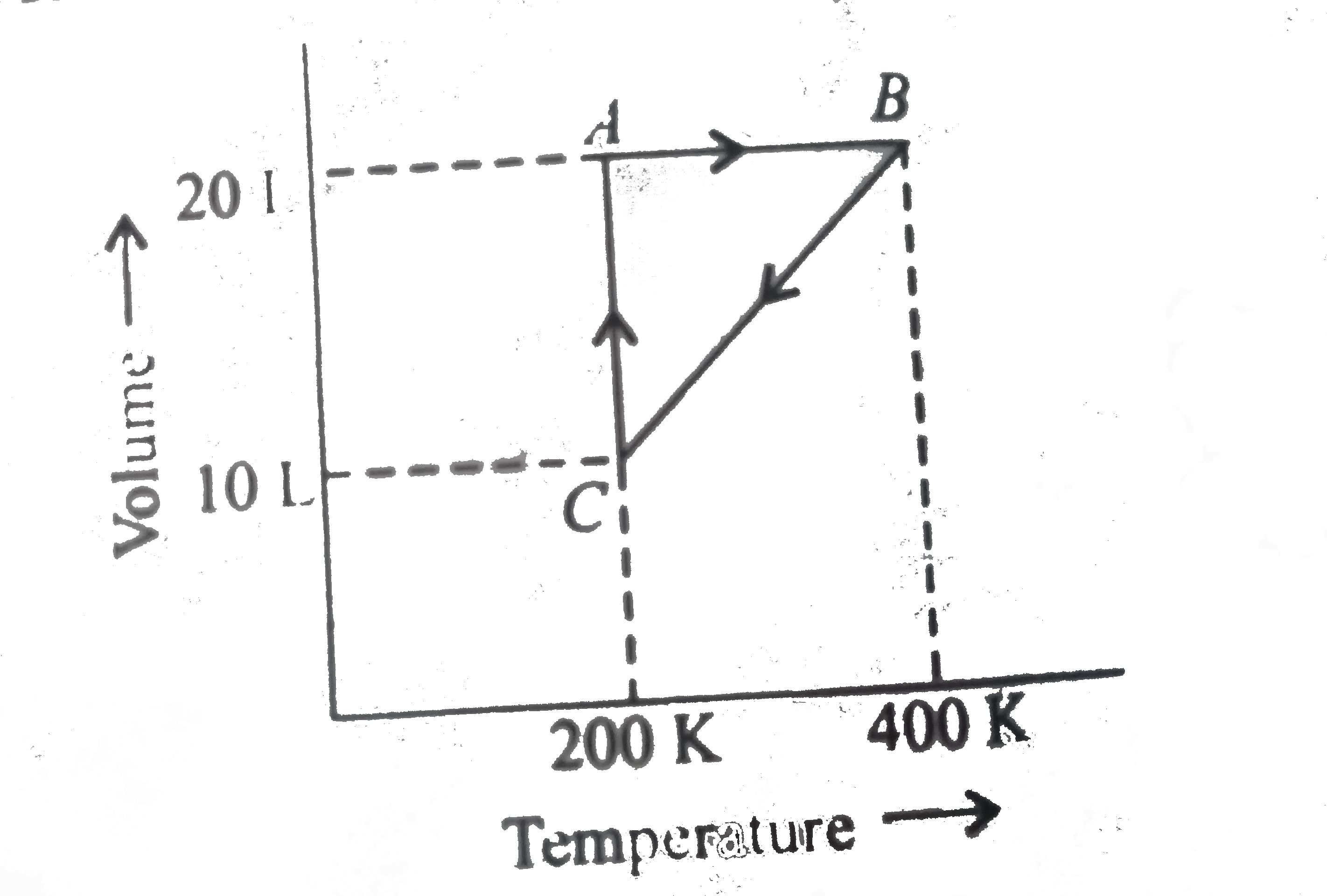Two spherical conductors of radii are charged to the same potential. If be respective value of surface density of charge on both the conductors, then the ratio of will be
The correct Answer is:D
To solve the problem of finding the ratio of surface charge densities σ1 and σ2 on two spherical conductors of radii R1=4cm and R2=5cm that are charged to the same potential, we can follow these steps:
Step 1: Understanding the relationship between charge, potential, and surface charge density
The electric potential V of a charged conductor is given by the formula:
V=KQR
where K is a constant, Q is the charge, and R is the radius of the conductor.
Step 2: Expressing charge in terms of surface charge density
The charge Q on the surface of a spherical conductor can be expressed in terms of surface charge density σ as:
Q=σ⋅A
where A is the surface area of the sphere. The surface area A of a sphere is given by:
A=4πR2
Thus, we can write:
Q=σ⋅4πR2
Step 3: Substituting charge into the potential formula
Substituting the expression for Q into the potential formula gives:
V=K(σ⋅4πR2)R=Kσ⋅4πR
Step 4: Relating the potentials of both conductors
Since both conductors are charged to the same potential, we can write:
V1=V2
This leads to:
Kσ1⋅4πR1=Kσ2⋅4πR2
The K and 4π terms cancel out, simplifying to:
σ1R1=σ2R2
Step 5: Finding the ratio of surface charge densities
Rearranging the above equation gives:
σ1σ2=R2R1
Substituting the values of R1 and R2:
σ1σ2=5cm4cm=54
Final Answer
Thus, the ratio of the surface charge densities is:
σ1σ2=54
---
The electric potential V of a charged conductor is given by the formula:
V=KQR
where K is a constant, Q is the charge, and R is the radius of the conductor.
The charge Q on the surface of a spherical conductor can be expressed in terms of surface charge density σ as:
Q=σ⋅A
where A is the surface area of the sphere. The surface area A of a sphere is given by:
A=4πR2
Thus, we can write:
Q=σ⋅4πR2
Substituting the expression for Q into the potential formula gives:
V=K(σ⋅4πR2)R=Kσ⋅4πR
Since both conductors are charged to the same potential, we can write:
V1=V2
This leads to:
Kσ1⋅4πR1=Kσ2⋅4πR2
The K and 4π terms cancel out, simplifying to:
σ1R1=σ2R2
Rearranging the above equation gives:
σ1σ2=R2R1
Substituting the values of R1 and R2:
σ1σ2=5cm4cm=54
Thus, the ratio of the surface charge densities is:
σ1σ2=54
Topper's Solved these Questions
- ELECTROSTATIC POTENTIAL AND CAPACITORSBook:DC PANDEY ENGLISHChapter:ELECTROSTATIC POTENTIAL AND CAPACITORSExercise:(B) Chapter exercises
Explore 17 Videos
- ELECTROSTATIC POTENTIAL AND CAPACITORSBook:DC PANDEY ENGLISHChapter:ELECTROSTATIC POTENTIAL AND CAPACITORSExercise:(C) Chapter exercises
Explore 50 Videos
- ELECTROSTATIC POTENTIAL AND CAPACITORSBook:DC PANDEY ENGLISHChapter:ELECTROSTATIC POTENTIAL AND CAPACITORSExercise:Check point 2.5
Explore 20 Videos
- ELECTROMAGNETIC WAVESBook:DC PANDEY ENGLISHChapter:ELECTROMAGNETIC WAVESExercise:Sec C
Explore 22 Videos
- ELECTROSTATICSBook:DC PANDEY ENGLISHChapter:ELECTROSTATICSExercise:Medical entrances gallery
Explore 37 Videos
Similar Questions
Two spheres of radii 2 cm and 3 cm are charged to the same potential. If σ and σ2 be respectively the values of surface charge density on the conductors, then the ratio σ1σ2 will be
View SolutionElectrical conductivies of Ge and Na are σ1 and σ2 respectively. If these substances are heard, then
View Solution
Knowledge Check
Two metal wires of identical dimesnios are connected in series. If σ1 and σ2 are the conducties of the metal wires respectively, the effective conductivity of the combination is
Aσ1+σ2Bσ1+σ22C√σ1+σ2D2σ1+σ2σ1+σ2
A number of spherical conductors of different radii are charged to same potential. The surface charge density of each conductor is related with its radius as
View SolutionIf σx=5,r=−12andbyx=−27 , then the value of σy is:
View SolutionThree concentric spherical metallic spheres A,B and C of radii a,b and c(a<b<c) have surface charge densities σ,−σ and σ respectively.
View SolutionTwo metal wires of identical dimesnios are connected in series. If σ1 and σ2 are the conducties of the metal wires respectively, the effective conductivity of the combination is
View SolutionTwo unequal blocks placed over each other of densities σ1 and σ2 are immersed in a fluid of density of σ. The block of density σ1 is fully submerged so that ratio of their masses is 12 and σ/σ1=2 and σ/σ2=0.5. Find the degree of submergence of the upper block of density σ2.
View Solution
The pressures at A and B in the atmosphere are, respectively,
View SolutionThree concentric metallic spherical shells A,B and C of radii a,b and c(a<b<c) have surface charge densities +σ,−σand +σ respectively ,the potential of shell B is
View Solution